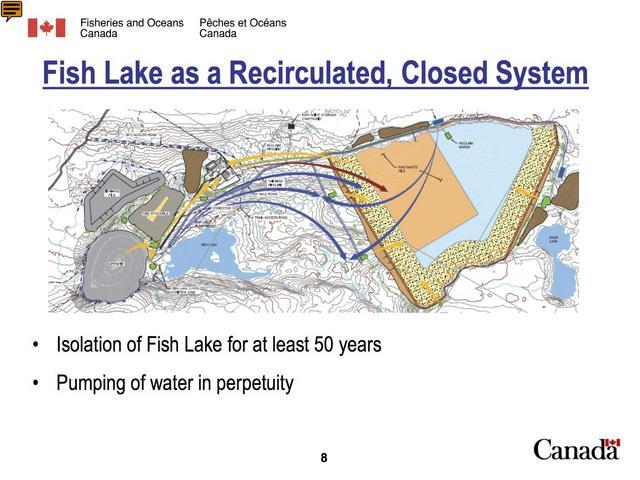Protect Fish Lake - Teztan Biny
Letters & News
Below are letters to the editor, newspaper articles and media releases regarding Fish Lake / Prospertity Mine Project
Blog archive
Blog categories
Blog tags
aboriginal rights & title court case Environmental Assessment exploration approval First Nations Summit FNWARM Legal action New Democrats rights and title Sierra Club Taseko Mines Tsilhqot'in National Government Union of B.C. Indian Chiefs United Nations Wilderness Committee
Federal and Provincial Departments Refute Proponent's Claims Mine Bid is Environmentally Sound
 Hello All Friends of Friends of the Nemaiah Valley;
Hello All Friends of Friends of the Nemaiah Valley;We have issued the following News Release today after following the week of technical hearings before the Panel re the New Prosperity mine hearings.
Williams Lake, B.C. August 1, 2013: Evidence from federal and provincial mining, environment and fisheries officials has raised serious concerns about Taseko Mines Ltd's revised submission for a massive open pit low-grade ore mine at Teztan Biny, Fish Lake.
As the Federal Review Panel’s technical hearings for the proposed New Prosperity Mine wrap up today, the evidence (see examples below) is piling up that not only is this mine economically unfeasible and a burden to future generations and governments, but that Taseko Mines Ltd.’s claims to have ‘saved’ Teztan Biny (Fish Lake), are baseless.
“The Friends of Nemaiah Valley have been active participants in both the general and technical hearings and we are increasingly concerned about why we are even at the hearing stage of this process,” said David Williams. “What we now have before us is a stark picture of a mine plan that in fact does not contemplate ‘saving’ anything, and still plans to completely destroy large portions of Fish Creek, Little Fish Lake, and offers an unproven and entirely experimental recirculation life-support scheme for Teztan Biny.
“ This is not just our assessment,” Mr. Williams said. “We have now heard from the BC Ministry of Energy and Mines, Environment Canada and the Department of Fisheries and Oceans, who have all confirmed the entirely unproven nature of this kind of mine proposal”
“This has not been done anywhere ever in history and there is no evidence that it can be done now.”
Here are just some of the facts.
BC Ministry of Energy and Mines (MEM):
“The water quality monitoring and effects assessment results indicate that significant adverse changes to water quality in Fish Lake and its tributaries will occur in the future, even if an effective groundwater capture system could be implemented (which is uncertain …)” (Written Submission, July 30, 2013, p. 3).
“….MEM believes that the project presents significant environmental risk … MEM concludes that it is unlikely that the project can be developed as currently designed without adverse effects to the water quality of Fish Lake and its tributaries from [Tailings Storage Facility] seepage …” (Written Submission, July 30, 2013, p. 6).
Environment Canada:
“The Proponent’s modelling suggests water quality in Fish Lake may be marginal for the protection of aquatic life.” (Written Submission, July 25, 2013, p.10)
“There are few, if any, examples of lake recirculation at the scale proposed by the Proponent” (Written Submission, July 25, 2013, p. 11).
“Environment Canada is concerned that the recirculation mitigation measure proposed to manage water quality and the biological productivity of Fish Lake is unproven at this scale…the high level of uncertainty regarding the Proponent’s recirculation scheme is a particular concern given the stated goal of preserving Fish Lake.” (Written Submission, July 25, 2013, p. 12).
“Environment Canada is concerned that the Proponent may have underestimated the potential impacts of the Project on water quality in Wasp Lake, Little Onion Lake and Big Onion Lake. Given that these lakes drain to the Taseko River, Environment Canada is also concerned that the Proponent may have underestimated impacts on water quality in the Taseko River.” (Written Submission, July 25, 2013, p. 19).
Department of Fisheries and Oceans:
“Natural Resources Canada recently expressed concern that Taseko’s seepage rate estimates for the TSF [Tailings Storage Facility] may be 11 times higher than those modeled in the EIS [Environmental Impact Statement] … as a result, groundwater seepage estimates that were modeled in the EIS may be underestimated. If actual baseline groundwater seepage contributions into Taseko River are significantly higher than those modeled, then development of the Project could result in impacts to Taseko River that have not been considered by the Proponent.” (Written Submission, July 23, 2013, p. 13).
“The Proponent’s mitigation and adaptive management plan to preserve the functioning of Fish Lake using a recirculated closed system uses unprecedented and untested technology … DFO is not aware of any examples of wilderness lakes or watersheds that have been subject to a recirculation program.” (Written Submission, July 23, 2013, p. 14).
Xeni Gwet'in Chief Roger William said, “We call on the Proponent to acknowledge the real environmental impacts of increased seepage, of destroying wetlands, of destroying Little Fish Lake, and the unproven disaster that lake recirculation presents for the lands and waters of the Tsilhqot’in people.”
Contact:
David Williams: 250-592-1088; email: info@fonv.ca
Chief Roger William: 250 394-7023; cell: 250-267-6593
Councillor Marilyn Baptiste: 250 394-7023; cell: 250-267-1401
This image is from DFO's presentation to the Panel:

Posted by: Wolfgang Zilker Thursday Aug 01, 2013 13:04
Categories: CEAA | Tags: Environmental Assessment